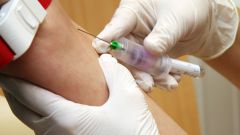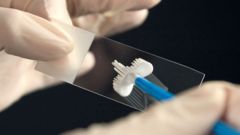Instruction
1
Prenatal screening may be conducted twice: in the first and second trimester of pregnancy. It can be used to calculate the probability of having a child with genetic abnormalities. Upon receipt of the results beyond the norm, the woman will be offered genetic counseling and invasive diagnostic that will give the final answer about the presence or absence of fetal genetic disorders.
2
Screening the first trimester, or double test, conducted in the period of 10-13 weeks. The second screening or triple test runs from 14-th to 20-th week. It is very important that the term has been precisely calculated, otherwise there is a risk of unreliable results. To avoid this, prior to the study (even if you do it in a private lab) refer to the gynecologist, who on the date of the last menstrual period and the size of the uterus will determine the duration of pregnancy.
3
Ultrasound examination is an integral part of prenatal screening. And double and triple test suitable ultrasound performed at 11-12 weeks. First, it will clarify the term of pregnancy, and secondly, some of these studies (CTE, NT, BDP) will be made in the form, which the doctor will fill before the blood sampling.
4
On the day of the screening weigh. Do it on an empty stomach. Preferably, you had the minimum of clothes. Tell your doctor weight with an accuracy of 100 grams. This value will also be added to the form which you give to the technician during a blood donation.
5
If blood sampling is scheduled for the morning, do not Breakfast. With a strong thirst and drink some water (100 ml). If blood sampling will be performed in the second half of the day, do not eat for 4 hours before the procedure. Give the assistant the form-direction to make sure you have all the necessary information.
6
Depending on where you donated blood, processing of the results takes one day (in a private lab) to several weeks (for women). If the risk of having an affected child is more than 1:250, you should consult with a geneticist. Often the results are expressed in relative units (IOM). In this case, the norm will be considered as a value in the range of 0.5-2 Mω.
Note
The results of the screening can be affected by various diseases of the mother, hormonal drugs, multiple pregnancy, and even nicotine dependence women. Therefore, to evaluate the results should not very pregnant, and qualified.




